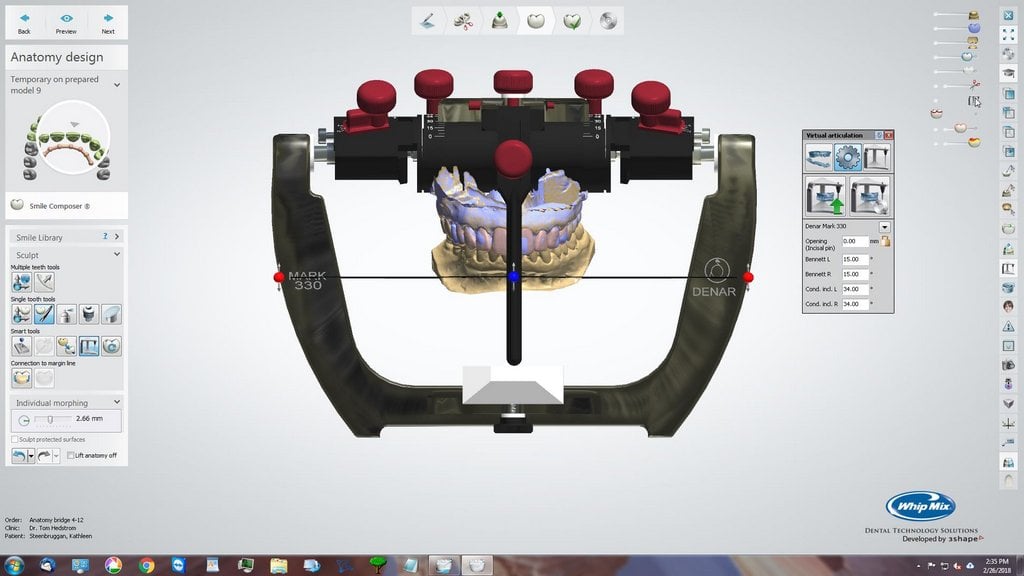Occlusion is defined as making contact with the surface of an opposing tooth when the jaws are closed. As dental technicians, we understand this is how teeth fit together and close on each other. However, there is a lot more to it. Occlusion is much more than just how the teeth fit together and close on each other, it has to do with movement. No two patients have the same occlusion. Patient occlusion is based on individual movements, tooth surface, the shape of the muscles of the condyle, how they operate and if they have a TMJ disorder. In order to better understand types of occlusion, it's been broken down into three categories: Class 1, Class 2 and Class 3.
Class 1 Occlusion

Teeth are aligned in Cusp Fossa relationship with their antagonist teeth. This is noted as “NORMAL” occlusion.
This is also known as the "standard" of occlusion and what we try to achieve.
Class 2 Occlusion
 Anterior Maxillary teeth are protruded horizontally or pushing over the mandibular teeth. Position of the buccal cusp tips have also moved anterior to class 1 position.
Anterior Maxillary teeth are protruded horizontally or pushing over the mandibular teeth. Position of the buccal cusp tips have also moved anterior to class 1 position.
Also known as ‘Over-jet’.
Class 3 Occlusion
 Anterior Maxillary dentition rest posterior to the mandibular anterior teeth. Posterior teeth are in cross bite; that is the buccal cusp tips rest inside the fossae of the lower dentition, instead of the cusp tips of the lowers resting inside the fossae of the upper.
Anterior Maxillary dentition rest posterior to the mandibular anterior teeth. Posterior teeth are in cross bite; that is the buccal cusp tips rest inside the fossae of the lower dentition, instead of the cusp tips of the lowers resting inside the fossae of the upper.
This type of occlusion can give you an interesting bite relationship and restorative problem with function as you create teeth that move in that relationship versus a Class 1 relationship. When you receive cases with a Class 3 Occlusion, you will need to be careful as you create the restoration because where you might create teeth that look nice, they may actually be interfering in function.
Having a thorough understanding of occlusion classes along with function can help you create better restorations leading to reduced remakes and increased doctor and patient satisfaction.













Leave a comment